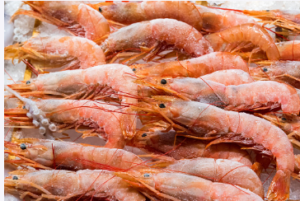Prawns are incredibly versatile seafood, suitable for many dishes. In addition, frozen prawns can quickly be defrosted and used in recipes without fear of spoilage.
 Frozen prawns can be found at many grocery stores; however, they are more expensive than fresh prawns.
Frozen prawns can be found at many grocery stores; however, they are more expensive than fresh prawns.
Defrost in cold water
Prawns are delicious and versatile seafood that can be used in many recipes. They can be boiled, steamed, deep-fried or grilled; they even make tasty salads or prawn cocktails! Just remember to make sure the prawns are fresh before cooking them!
Frozen prawns offer the convenience of fresh seafood without effort or mess. You can easily find them frozen at your local supermarket or fishmonger for a safe, economical snack.
Defrosting frozen prawns NZ is easy; place them in a bowl of cold water. This method is one of the quickest and simplest ways to do it, allowing your shrimps to thaw quickly.
When defrosting frozen prawns NZ, there are several methods to choose from, depending on your requirements. For example, cold water can quickly defrost prawns depending on their number, while other methods require more extended completion.
Another alternative is to defrost your prawns in the microwave. This method is safer, as heat kills any bacteria on the shells. But, unfortunately, it can take some time to defrost all those shrimp!
You can thaw your prawns by placing them in brine. It is an efficient solution if you need to defrost them quickly. Mix salt with cool water until it tastes like the ocean, and then dip the frozen shrimp in this brine to warm up.
You can try defrosting your prawns using a poly bag. It works just as well, though it’s more involved. But, again, keep the prawns covered and sealed to prevent them from getting warm.
Defrost in the microwave
Defrosting prawns in the microwave is not recommended as it could partially cook or overcook them, leading to a loss of texture and flavour. Furthermore, ensure you use the correct power setting or defrost mode for the best results.
Microwaving shrimp for too long or with incorrect power settings can lead to overcooked and tough shrimp. Furthermore, the amount of time it takes for defrosting depends on your microwave and the size of the prawns.
One of the fastest and simplest ways to defrost prawns is by submerging them in cold water. This method is safe, taking approximately 10 minutes. Next, place them under running water while moving them around to ensure even liquid distribution, giving each side equal coverage.
When defrosting many prawns, you can expedite the process by adding two tablespoons/35 grams of regular salt to four cups/1 litre of water. Doing this will help the prawns defrost faster and more evenly.
Salting prawns before defrosting will add flavour and prevent them from becoming rubbery. Furthermore, washing the prawns after defrosting helps ensure they are thoroughly clean.
It is essential to keep prawns frozen at room temperature before thawing to prevent bacteria from growing during this process. Furthermore, ensure the prawns are stored in an area that keeps them cool until you are ready to use them.
Defrost in a brine
If you must defrost prawns before cooking them, the ideal method is in brine. The salt in the brine helps the shrimp defrost more evenly while keeping them fresh with water added.
Make a brine by adding one tablespoon of salt to 500ml/ 2 cups of water and pouring over the prawns. Stirring them thoroughly to dissolve salt crystals is essential; allow them to sit in this solution for around 15 minutes before draining and rinsing them thoroughly.
The salt in the brine helps keep prawns fresh and tender, keeping them from spoiling too quickly. Furthermore, it will preserve their flavour as well.
This method is the quickest and most straightforward way to defrost frozen prawns. Change the water frequently so they don’t sit in thawing juices that could breed bacteria. Avoid using warm water as this will speed up the process too quickly for safety’s sake; using any warm water could potentially put your prawns at risk.
Prawns are one of the most versatile seafood ingredients, allowing you to create various dishes. Popular options include grilled prawns, poached prawns and shrimp skewers which can be paired with multiple spices and sauces for additional flavour.
Salmon and trout are particularly delicious when combined with lobster tails. These ingredients add incredible flavour to your dish, setting it apart.
For optimal results, opt for prawns that have been individually quick frozen (IQF), as they will be more tender and flavorful than raw varieties. Plus, frozen prawns stay fresher longer in the freezer.
These IQF prawns are easy to thaw, so there’s no need to thaw them all at once. That makes them great for people with busy schedules who need meal flexibility.